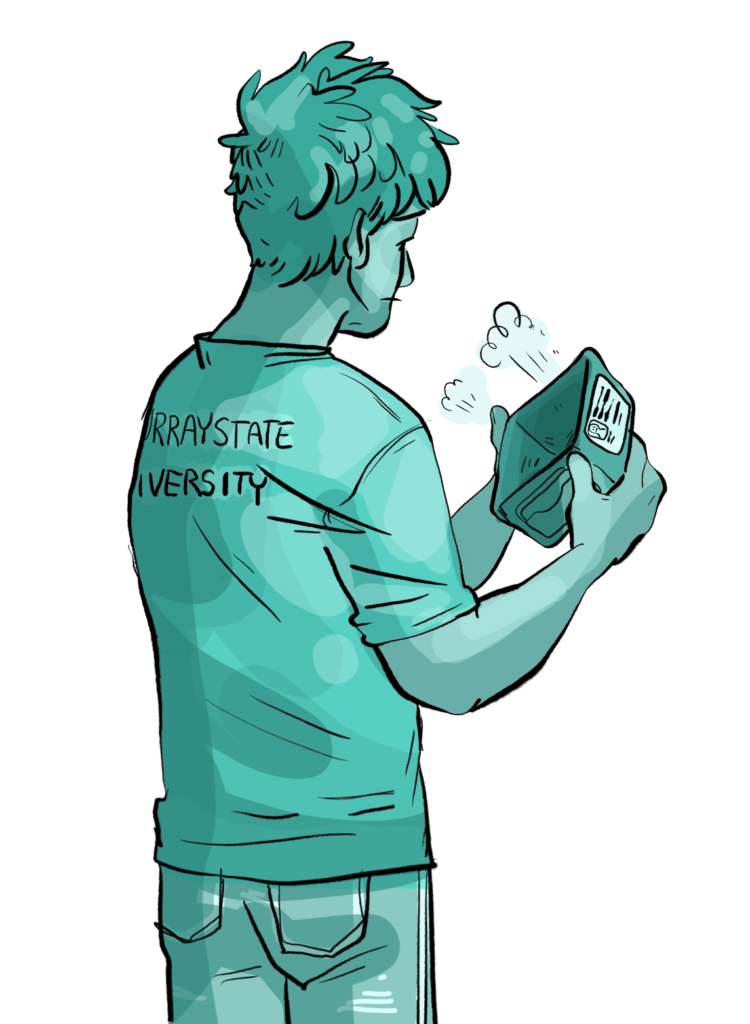Poverty is a universal problem; while it is more visible on a global scale, it is present in Murray as well.
In 2015, all 193 member states of the United Nations aimed to end poverty and hunger by passing the Sustainable Development Goals. The aim of the agreed 17 goals was to improve the economic and social welfare of people and implement sustainable practices for the earth.
The first goal states, “End poverty in all its forms everywhere,” and the second states, “End hunger, achieve food security and improve nutrition and promote sustainable agriculture.” Some other goals include ensuring the availability of water, higher employment rates, reducing inequality in all forms and protecting rainforests.
The Gates Foundation keeps an annual scorecard of progress toward the SDGs. The foundation recently showed that progress is being made, however the goal of ending poverty by 2030 is not on track.
In terms of immediate care for human beings, it makes sense that poverty and hunger rank as the top two. The pair forms a constant cycle; poverty hardly exists without hunger and vice versa. A person that lives below the poverty line or suffers from chronic hunger struggles with many things that others take for granted.
Poverty often correlates with issues such as increased infant mortality, chronic diseases and poorer nutrition and growth. It’s also more difficult to get into and graduate from college. Additionally, impoverished people are at a higher risk for mental health issues.
Kentucky has the fourth highest poverty rate in the United States, according to the U.S. Census Bureau.
According to Data USA, 8,500 people were employed in the town of Murray in 2017, and the median household income was $27,282. This is significantly lower than the national median of $60,336, but — on a positive note — the median income grew 11.4 percent from 2016 to 2017. In Murray, 35.1 percent of the population lives below the poverty line, which is much higher than the national average of 13.4 percent.
The community offers a variety of support options to Murray residents, especially those who live below the poverty line.
Needline is a philanthropic food bank that runs on food donations and volunteers. It offers a backpack program for children who won’t receive a meal after school and one day per month, food is given solely to senior citizens. They also provide toiletries, diapers and shower supplies.
Soup for the Soul, another philanthropy in Murray, provides a freshly cooked dinner every weekday and also relies on volunteers and food donations. Twice a week in the summer, they offer lunch to children out in the county.
Olivia Robison, Program Manager and Volunteer Coordinator at Soup for the Soul, said Murray’s community is made up of countless nonprofits, churches, agencies and individuals who see the need and want to help.
“I have spent time volunteering, interning, and now working with many of those living in poverty in Murray,” Robison said. “During this time I have learned about both the hardships faced and benefits offered for the population in this area.”
Robison said the main hardship that she sees is the illusion of the “small town college” atmosphere that can easily mask the fact that poverty is an overwhelming issue.
In Murray, the top two largest demographics living in poverty are females aged 18-24, followed by males in the same age group as of 2017. Often, people do not realize that many students around them come from impoverished families. Many students living in poverty would prefer that their peers do not know.
Murray State provides great accommodations for students living below the poverty line. Career Services has a Career Closet that offers slightly used business professional clothing. The clothes are in all sizes, and students can keep the clothes free of charge. The Women’s Center recently opened a bra closet for students in need. Racers Helping Racers is a food pantry for students located in Blackburn Science Building.
Poverty rates are more likely to increase for younger age groups in college towns due to student loan debt. Student debt is a major issue nationally; according to Forbes, the total student loan debt in the U.S. is $1.5 trillion. Students in Murray are no exception.
Although Murray State is one of the more affordable universities in the state and do a great job of helping students financially, the University continues to increase tuition and fees. The Board of Regents approved a 2.8 percent tuition and fee increase for the 2019-20 school year.
Breaking it down, residential college costs increased at a rate of 2 percent, and meal plan costs have a 2.63 percent. In-state tuition for students admitted after summer 2016 totals to $9,084.
Many students utilize campus counseling services due to finance-related stress. Perhaps a counseling program that specifically target low-income students could be implemented by the university to assist with financial stress.
Students are forced to work multiple jobs while juggling school in order to afford their education. In general, there aren’t enough opportunities with federal student aid or work study. This is an issue that extends past the University and is applicable across the nation. Nonetheless, it is a substantial problem.






























































































